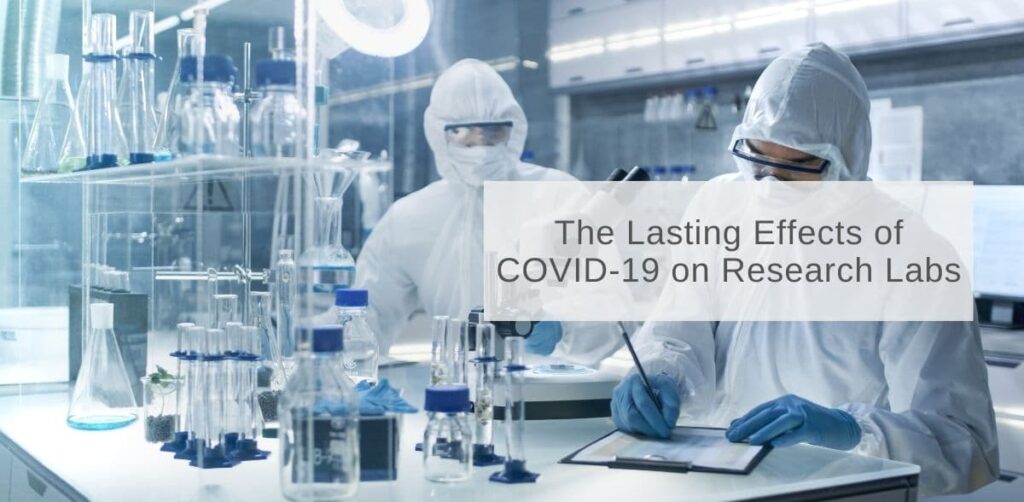Summary
COVID-19 has broadly impacted biomedical research, in this article we give an overview of its effect on labs and discuss how this can shine a light on the advantages of using alternative model organisms in research.
Figure 1. Research laboratory status in August 2020 reported by respondents as a result of COVID-19 (Black, 2020).
The outbreak of COVID-19 caused all areas of life to be shut-down, including the closure of research labs. Kathleen Beeson, a graduate student at OHSU (Oregon Health & Science University), detailed the experience of having to halt her research, “I found myself euthanizing mice by the masses in the university basement” (Chen, 2020). These genetically engineered mice are of special importance to Beeson’s research: she raised the colony herself from a single pair of mice and relies on their fresh brain tissue to better understand how proteins help transmit chemical signals. Ultimately, Beeson’s research could give insight into neurological dysfunctions such as epilepsy, but it will take months for her to recover from this setback.
Rodent animal models aren’t the only mammalian model to be affected by the pandemic, there is also a shortage of primates in the USA (Zhang, 2020). Primarily, the shortage is due to a sizable drop in supply (China supplied 60% of the monkeys imported to the USA in 2019), coinciding with the pandemic-induced surge in demand. This shortage is important because although rodent models make up the majority of animals used in biomedical research, primates are often the last step before human clinical trials.
This brings us to the fact that there is a discrepancy in how the pandemic has impacted different research. In a recent Seventeen Minutes of Science episode Christian Lawrence, Assistant Director of Research Operations at Boston Children’s Hospital, said that “like everybody else, we were really stretched by the pandemic.” However, he continued on to say that, “I think it highlights one of the strengths of the zebrafish model system (…) : the difference between what was happening in many fish facilities versus mouse and rodent facilities was pretty stark in the sense that in rodent facilities (…) there were necessary reductions in the numbers of animals that were being kept, whereas I will tell you that our census has increased. And that was not a unique experience.”
In a separate episode Dr. Zoltan Varga, the director of the Zebrafish International Resource Center (ZIRC), echoed a similar sentiment, “we’re currently expanding the building and we’re adding more quarantine space. We’re adding more lab space. We’re increasing the cryopreservation of storage space. We’re upgrading our water systems. And so, we are positioning ourselves to be around for many decades.”
Lawrence attributes the difference between COVID-19’s effect on fish versus rodent facilities to the model themselves, emphasizing that rodent models require a lot of oversight. “My hope,” he said, “is that we take these lessons and we learn from them and we leverage that information of this incredible stress test that we’ve been under to make things better. And I think we can.”
One way Lawrence sees the research community learning and adapting from the pandemic is by moving away from the concept that someone is, “a fly person or worm person or a cell person or mouse person”, and instead, “be somebody that utilizes a whole range of these systems.” After all, non-mammalian models are now applicable to many scientific disciplines. Zebrafish alone has expanded its utility so much that it can be considered, “the aquatic version of the laboratory mouse.”
“[Zebrafish are] the aquatic version of the laboratory mouse” – Christian Lawrence, 17 Minutes of Science Ep. 38
For some research, such as testing the safety of vaccines before they go to human clinical trials, the use of mammalian models is unavoidable. But for other studies, this pandemic may be the push that was needed to adopt a more multi-modal approach to research.
Resources
- Black, Samantha. (2020). COVID-19 shuts down research labs as concern grows among scientists. The Science Advisory Board. https://www.scienceboard.net/index.aspx?sec=ser&sub=def&pag=dis&ItemID=623
- Chen, Justin. (2020). Covid-19 has shuttered scientific labs. It could put a generation of researchers at risk. Stat. https://www.statnews.com/2020/05/04/coronavirus-lab-shutdowns-impact-on-scientists-research-delays/
- Zhang, Sarah (2020). America Is Running Low on a Crucial Resource for COVID-19 Vaccines: The country is facing a monkey shortage. The Atlantic. https://www.theatlantic.com/science/archive/2020/08/america-facing-monkey-shortage/615799/



